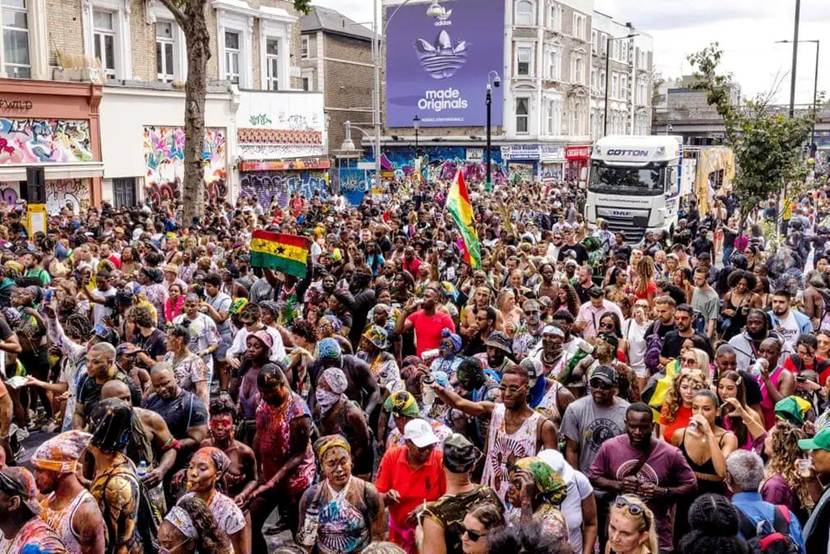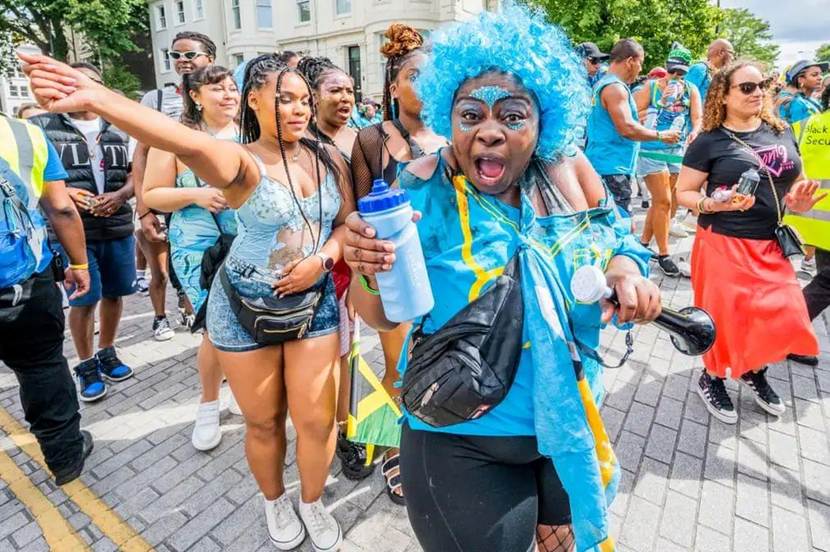So,why study festival to understand culture?
Festivals are living embodiments of culture, synthesizing traditions, collective identities, and social values. As public rituals, festivals safeguard heritage, consolidate society, and mirror a nation's changing spirit. Governments tend to formulate festival policies to augment cultural pride, foster unity, or emphasize historical discourses. Festivals become living cultural repositories, illustrating how politics, history, and public life converge.
Specifically from the remaining 7 parts,
Shaping values
Festivals usually bear cardinal social values, including inclusivity, tradition, or community spirit. For example, diversity festivals can make the ideals of tolerance and unity more tangible.
Influencing Social Rhythms
Festivals' timing and rituals become part of the rhythm of everyday life, shaping collective memories and anchoring social calendars. Festivals impact individuals' work-life balance and domestic rituals.
Catalyzing Cultural Exchange
Festivals attract tourists from all over the world and become places of cultural exchange. Traditional music, art, or food presented in festivals can lead to cross-cultural dialogue and appreciation.
Representing Group Identities
Festivals of minority or regional groups give communities the power to legitimize their cultural identities. Festivals provide ecological niches for marginalized communities to assert their heritage and call for recognition.
Guiding the Cultural Economy
Festival policy can contribute to local economies through tourism, craft markets, and the hospitality industry. Governments invest in festivals as a means of building cultural industries and creating jobs.
Inspiring Symbols and Language
Festival symbols (e.g., clothing, slogans) become cultural signs and contribute to the language of a nation. Phrases or rituals of a festival may become part of everyday language, expressing universal values.
Building Collective Memory
Recurrent festivals consolidate historical discourses. Commemorative festivals, for example, connect past struggles or triumphs to present identities, making national pride more resilient.
The following is an example from England.
A Celebration of Diversity & Resilience: The Notting Hill Carnival
The Notting Hill Carnival in England has powerful Caribbean origins. It is a very representative and instructive case of the ways festival policies can construct cultural identity. This grand carnival started in the post-WWII immigration wave. During that time, many immigrants from the Caribbean came to the UK in search of a new life. They slowly built their own communities in West London. But the immigrants faced many problems in a foreign land, especially racial discrimination and cultural differences.
In such a situation, the Notting Hill Carnival began in the 1960s. In 1964, Trinidadian immigrant Claudia Jones organized the first “Caribbean Carnival”. There were street parades and colorful costumes to the rhythm of steel drum music. The event was not just a carnival. It was a militant protest against racial treatment. Immigrants used this vivid cultural approach to try to break down racial barriers and call for social respect and acceptance.
It is exciting that this activity, which first came from protest, quickly made community members feel connected. Over time, it grew bigger and became a three – day big celebration. Now it is the largest street festival in Europe. Every August 24, when the Notting Hill Carnival is held, it attracts more than 2 million tourists. It has a unique charm. Colorful parade teams flow on the streets, steel drum music beats a warm rhythm, and the air is filled with the aroma of Caribbean food. These elements are intertwined and become the most vivid footnote of London’s multiculturalism(Admin, 2023).

This colorful display is meticulously organized by the local Caribbean community.
Not only does it reflect profound respect for African diasporic traditions, it also comes naturally within Britain’s multicultural climate. The carnival is no longer a mere exciting celebration. It is a soft tie that dissolves the walls of racism. It brings people of different ages together to sit down and have serious discussions regarding race and identity. And others can feel the power of togetherness when they communicate with each other.
How the seven points outline the Notting Hill Carnival?
Shaping Values: From Protest Symbols to Inclusive Symbols
Early on, it used steel drum music and Creole slogans (like “Forward Ever, Backward Never”) to fight discrimination, as a “cultural weapon” for Black people. In 2023, an “LGBTQ+ Friendly Zone” was installed, blending rainbow flags with Caribbean traditional symbols. BBC called it “rebuilds social value through carnival rituals”, bringing gender diversity to the public discourse.
The government incorporated the carnival into the 2023-2030 Cultural Development Strategy to show support for “unity in diversity” (London City Government, 2023).
Influencing Social Rhythms: Rebuilding Urban Time
Happening every last weekend in August, it becomes London’s own “summer cultural clock”. Even companies adjust working hours: London Transport figures show the tube runs until 3 AM when carnival time is near, and employees change weekend arrangements to go.
In community neighborhoods, immigrant children make carnival costumes and learn brukdown dance, all of which are passed down from generation to generation. For example, a 70-year-old steel drum master teaches grandkids to play Yellow Bird, an annual cultural tutorial for immigrant families.
Catalyzing Cultural Exchange: Global and Local Mixtures
Steel drums (which were made out of Trinidad oil drums) combined with electronic rhythms created the “London Sound”. A UK electronic musician and a Jamaican reggae band collaborated in 2023, and the video was watched over 5 million times on TikTok, and thus the debate around “traditional instruments going global”.
And food, of course, is also a bridge of cultures! Molecular cuisine (e.g., liquid nitrogen chili foam) at jerk chicken vendors, and vegan jackfruit wraps in Vogue’s food column illustrate how Caribbean food integrates with current fashions and how it honors the positive impact of festival life on the intermixing of foods.
Showing Group Identities: Empowering Marginalized Groups
Caribbean immigrants reclaim cultural pride by dressing up (e.g., hand-made feather headdresses that require several months to make). In 2023 “Call of the Ocean” theme, a Ghanaian immigrant’s “Ashanti Wave Totem” costume was hailed as “a visual statement of the African diaspora” by The Guardian. Teens construct new identities at the “Carnival Academy”: 15-year-old immigrant girls mix TikTok dance and Barbadian brukdown, producing a “digital-native” traditional dance. The Instagram hashtag #NottingHillYouth has over 10 million views.
Guiding the Cultural Economy: Street to Industry
In 2019, the carnival brought in £113 million to London, with “Portobello Road shops” sales increasing by 300%, and street artists seeing their tips up by 20% due to live-steaming (Kelly, 2024). Notting Hill Carnival 2023: LGBTQ+ groups celebrate visibility.). Derivative IP value then explodes in mushrooms. Fashion brands launched “carnival print” collections. Off-White 2024 spring/summer featured steel drum prints, with online sales up by 180%. Designers designed steel drum-shaped sneakers, selling for 300% on the secondary market higher (Williams, 2023).
Inspirational Symbols and Words: The Birth of New Cultural Vocabulary
New slang emerged from the carnival, including “Mas’” (short for “Masquerade”, carnival costume), which is now being used by London youth. Word changes about the carnival were recorded in the BBC documentary London Dialect.
Visual symbols also went around the world. Feather headdresses, steel drums, and rum punch cups were chosen by National Geographic as “modern British cultural symbols” in its “Global Cultural Symbols” report.
Building Collective Memory: Public Tales of Immigrant History
Caribbean steel drum music speaks for immigrants settling in new environments and their indomitable spirit. The attire is a symbol of the heritage of the ancestors, thus party people identify with their roots. Every carnival season, when carnival starts, steel drum bands parade on the road. Mad Caribbean culture and Notting Hill festival culture fuse into collective memory. Elders tell young people stories of their homelands, and members from all walks of life have a fondness for stories of struggle and triumph. It’s a living archive, collecting and relaying public stories of immigration that built modern Britain (Nannar, 2024).
Check out this video on steel drum, you can have a look!
https://www.itv.com/news/2024-08-16/the-steel-pan-bands-playing-to-preserve-a-cultural-legacy
Epilogue
The Notting Hill Carnival unmasks the power of cultural policies in seven ways – it is a "memory box" for Caribbean immigrants and a "cultural lab" for Britain to rebuild diverse national identity. From steel drum protests to worldwide fashion inspiration, this carnival illustrates: When marginalized cultures get voice, historical cleavages become inclusive beauty.
References
- Admin. (2023, August 11). Notting Hill Carnival. National Today.
https://nationaltoday.com/notting-hill-carnival/
- London City Government (2023). Cultural development strategy 2023-2030. https://www.london.gov.uk/content/cultural-strategy
- Kelly, J. W. (2024, August 26). Notting Hill Carnival: Caribbean celebration brings in global crowd. BBCNews. https://feeds.bbci.co.uk/news/articles/cj62917gw1no?app_lang=zh-CN
- Williams, K. (2023, July 28). Notting Hill Carnival 2023 to celebrate 50 years of sound systems and Mas bands. NME. Notting Hill Carnival 2023 to celebrate 50 years of sound systems and Mas bands
- Nannar, N. (2024, August 16). The steel pan bands playing to preserve a cultural legacy. ITV News. https://www.itv.com/news/2024-08-16/the-steel-pan-bands-playing-to-preserve-a-cultural-legacy




















 674
674

 被折叠的 条评论
为什么被折叠?
被折叠的 条评论
为什么被折叠?








